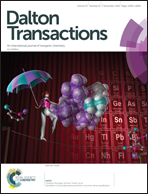MOF-derived Mn doped porous CoP nanosheets as efficient and stable bifunctional electrocatalysts for water splitting†
Abstract
Searching for highly active and stable bifunctional electrocatalysts for overall water splitting, e.g., for both the hydrogen evolution reaction (HER) and the oxygen evolution reaction (OER), is dominating in terms of bringing future renewable energy storage and conversion processes to reality. In this work, a kind of two-dimensional ultrathin manganese (Mn) doped polyhedral cobalt phosphide (Mn-CoP) has been synthesized via the etching-carbonization–phosphidation of Co-centered metal–organic frameworks. The as-prepared porous Mn-CoP nanosheets had a larger specific surface area and higher porosity, furnishing them with more plentiful catalytically active sites than their counterpart hollow CoP and Mn-CoP nanoparticles, and thus showed much better electrocatalytic activity for both HER and OER in acidic and alkaline media. In addition, the Mn-CoP nanosheets also demonstrated excellent durability after long-term operation. These high performances are attributed to the synergistic effects of the CoP nanosheets with intrinsic activity, the graphitic carbon and the controllable electronic structure doped by Mn and N elements. This synthetic methodology of using a classical MOF as a precursor to build a new 2D sheet-like composite may create opportunities to search for highly efficient and robust non-precious metal catalysts for energy-related reactions.



 Please wait while we load your content...
Please wait while we load your content...